Build Date: 2024-03-27
We have some great new features in this version. We encourage you to get familiar with them and start using them to your advantage! Feel free to contact our support team if you have any questions.
As you know, Fusion automatically sets a lot's status to closed when the last animal is sold and you can't manually change this status. Usually there is a period of time after the lot has closed when you are still working with the lot: entering billing information, managing invoices, printing closeouts, etc. Wouldn't it be nice if there was a way to distinguish lots that were still in this phase from those that you are completely finished with?
Well, now there is! We've introduced a new field which you can find in the Lot Edit window called Lot Is Fully Closed. This field starts off unchecked. After the lot has closed and you've finished working with it, check it off and you'll know you are completely finished with the lot.
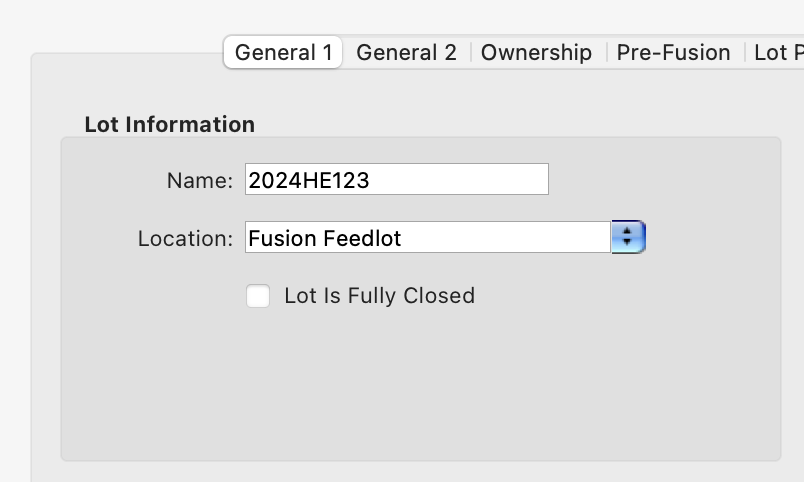
This field is a new column in the Lot Center window so you can search with it. We also enhanced the Status popup in this window with a new option called "Fully Closed". Now when you set it to "Closed", lots that are closed but not fully closed will be shown and when you set it to "Fully Closed", lots that are both closed and marked as fully closed will be shown.
When you upgrade, the fully closed field will be set to true for all lots already closed. You can adjust from there. Please keep in mind that this new field does not affect any internal business logic regarding lots being open or closed. It is only for your own use as a reminder for when you are finished with the lot.
There can be confusing, if not devastating, effects if someone enters the wrong dry matter percentage for an ingredient attribute or the wrong inclusion percentage in a ration—especially for a micro ingredient. To alleviate these costly mistakes, we've introduced the ability to define thresholds for each ingredient.
Once defined, Fusion ensures that ingredient attributes and rations cannot be saved if a value outside the threshold is entered.
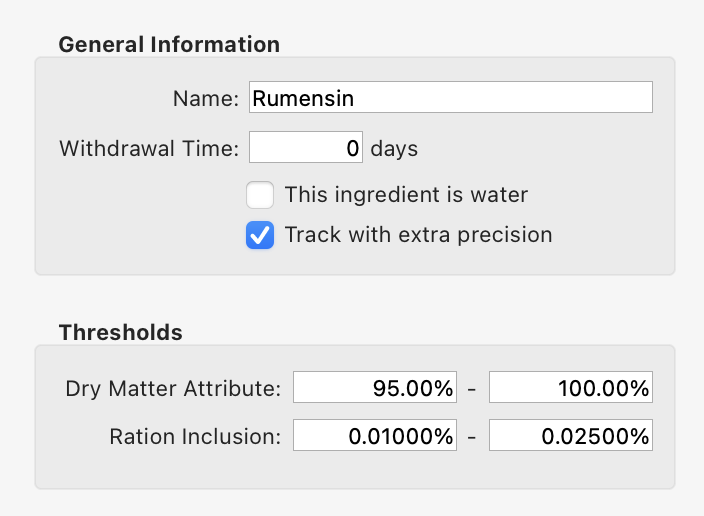
Have you ever found yourself scrolling through all the protocol variations while treating an animal, looking for the one which uses a particular drug? This just got a lot easier! The Protocol/Treatment Schedule window (this is the window you see when overriding a protocol while treating an animal) has an additional column labeled Primary Drug which shows the first drug listed for the first treatment date of each variation.
There is also a filter field above this column which you can use to quickly view just the variations with a particular primary drug. This small addition should be a great time-saver for these situations.
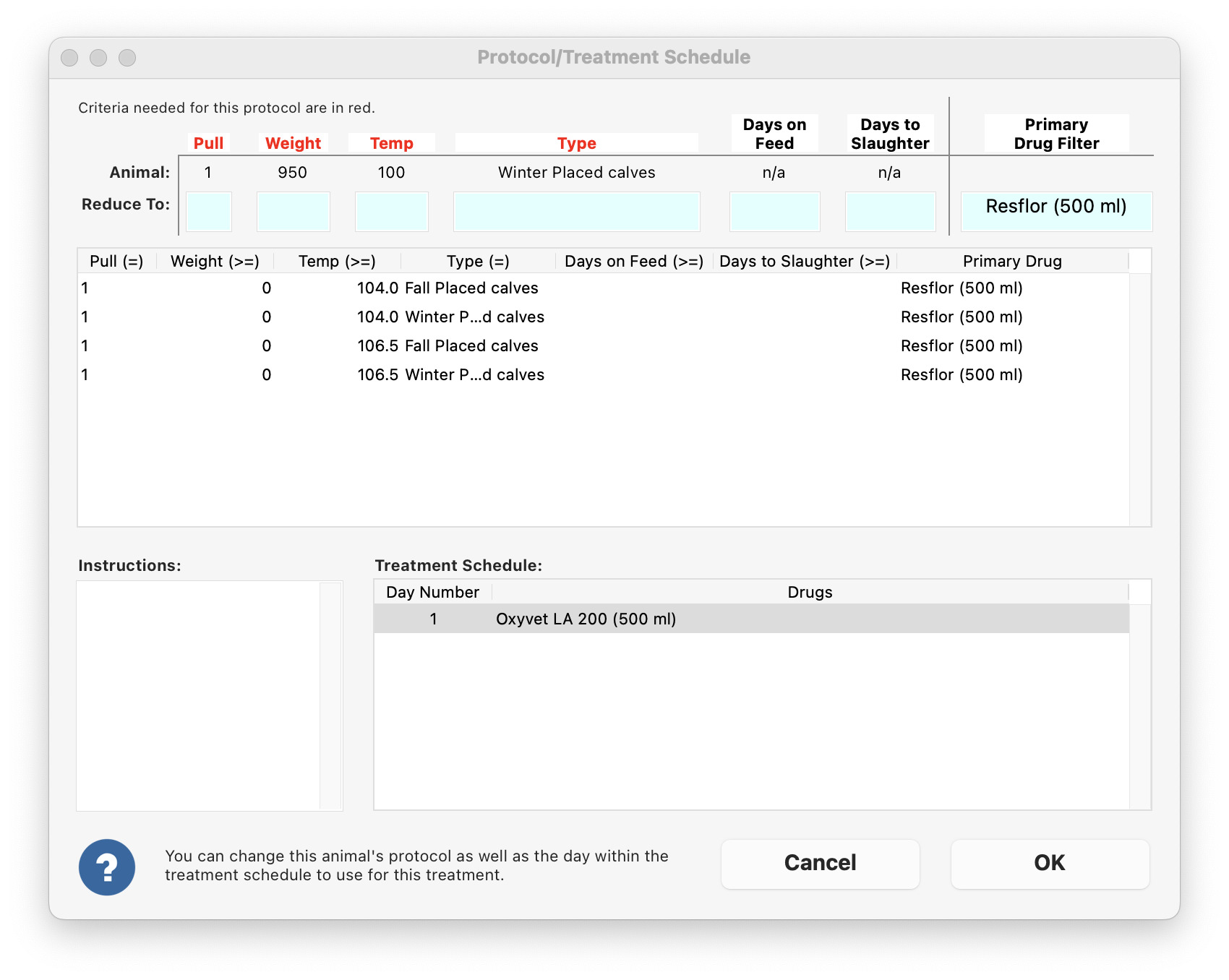
If your crew records deaths using the Simple New Death Out Cohort window, they know it can be a bit clunky to get the dead animal linked. This is because the window uses the same linking interface as other windows designed to link many animals. This upgrade smooths out the linking process by taking advantage of the fact that when you are recording a death, you are only linking one animal and you very likely to know the tag number.
Here's how it works: when the window first opens you get a chance to enter a tag number (even a partial RFID tag number works). Fusion shows a list of matching animals in a list. Just tap the correct one and Fusion will automatically link the animal and set up the entity in the next screen, saving you a lot of clicking!
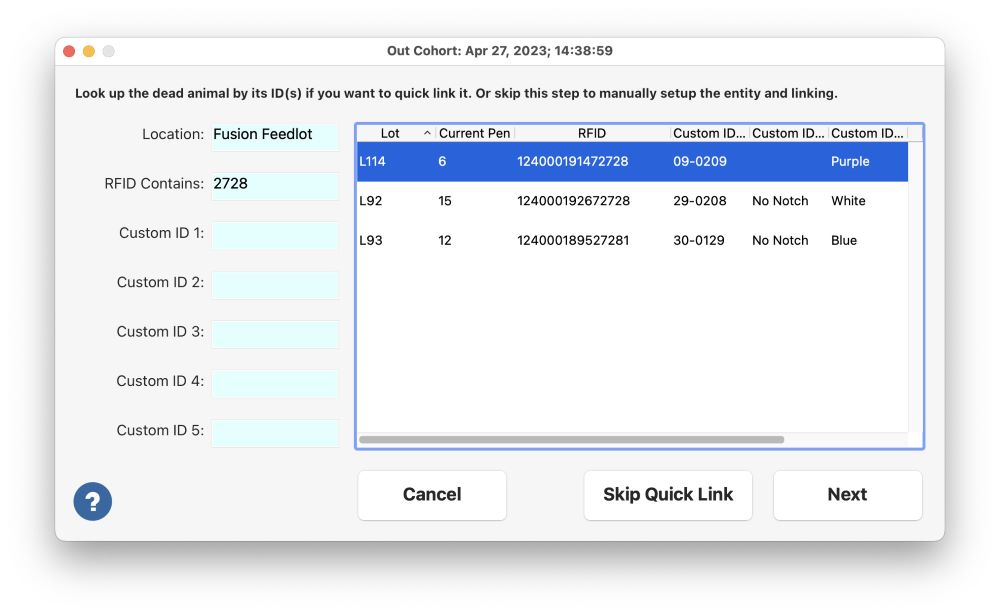
We learned that some customers were not using this window to record deaths because it didn't allow you to record the associated inputs at the same time. So we redesigned the main part of this window to accommodate this. You can still enter them in the office, if desired.
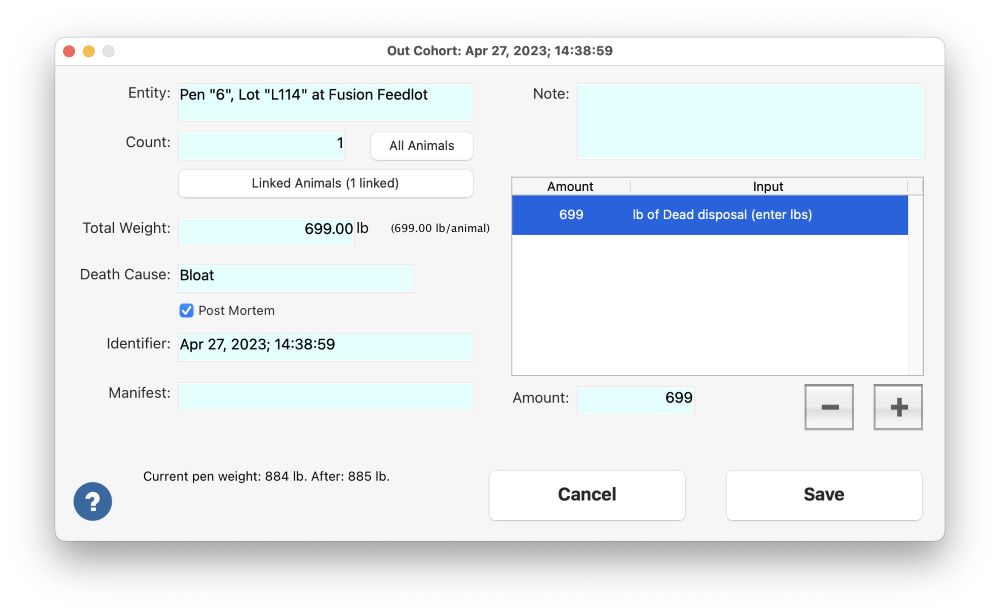
Whether you are purchasing animals or just switching to Fusion, you may wish you could import information about your animals from another system. In the past it was possible to import RFID numbers, but that was about it—at least easily. That all changes with this update! We've made a few changes to make this possible.
First, we've added a couple of new fields to the animal list. The first one is named Pre-Fusion Withdrawal Date. If animals coming from another system have a known withdrawal date, it can be put in this new field and Fusion will consider it when calculating withdrawals. This way the withdrawal information from the calf's previous life is not lost.
The second field is named Pre-Fusion History. If the records system used where the animals are purchased from can export the treatment history (or, really, any useful information about the animal) as a single text field, that information can be imported into this new field in Fusion. Not only will you be able to see it in the Animal History and Animals list windows, but you can also add it to a HUD to be seen during a chuteside job. There is even a new sort criteria so you can do something different to an animal during a chuteside job based on whether it has a pre-Fusion history.
Both of these fields can be seen and edited directly in the Animal History window. If an animal has a pre-Fusion withdrawal date, it will be shown in the withdrawal history of the animal, whether in the Animal History window or in a chuteside job HUD.
So how do you import all this information? We've enhanced the Import From File window (available from the Modify button in the Animals list window) in a few different ways to support this. First, the list of fields you can import into has been increased. New fields include Current Pen, Home Pen, In Date, Last Seen Date, Last Seen Weight, Estimated Slaughter Date, Pre-Fusion Withdrawal Date, and Pre-Fusion History. And you can import into the Lot field when an animal is being created (but not updated—use the Bulk Update window for that purpose). These fields were added since they will often be used to set up a new animal from a previous system.
Second, this window has a new popup where you can select a location. With no location selected, the import works as before, only able to update existing animals. With a location selected it will continue to update existing animals if Fusion finds a match, but will also create new animals if it doesn't find a match. The newly created animals will be assigned the selected location.
Finally, the window has a New Animal column so you can see whether Fusion will be creating a new animal or updating an existing animal during the import. You do need to run the Test Validity feature before this column will update.
As an aside, the Grid Edit window (also available in the Animals list window) can handle In Date, Last Seen Date, Last Seen Weight, Pre-Fusion Withdrawal Date, and Pre-Fusion History fields, bringing it in line with the Import From File window.
We hope this feature makes your life a lot easier by making it simpler to get animals into Fusion from other systems and that you'll benefit from seeing an animal's previous history right on screen when inducting, potentially reducing the amount of drugs used and saving you money.
It can be difficult to process cattle that have two RFID tags because Fusion will interpret each tag as a different animal. In some cases this can be alleviated if you could get Fusion to ignore tags that started with certain prefixes. For example, you might be in Canada processing cattle that have Canadian RFID tags. But some of them may have been in the States and have bangs RFID tags as well, which usually start with 982, 984, or 986.
New to this version of Fusion, there is an extra Job Setup step you can utilize to do just this. Enter a list of tag prefixes you want Fusion to ignore and it will be as if those tags were never there. Each prefix can be one or more digits so, for example, you might just enter one item to ignore all tags that start with "9". Hopefully this will make processing some groups of cattle much simpler.
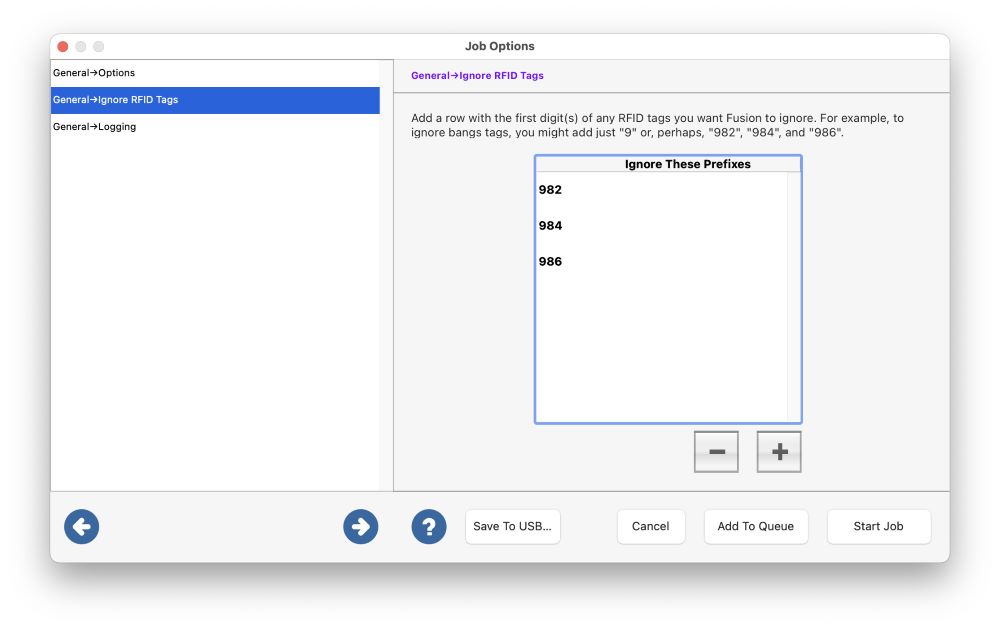
In addition to the prefix filtering ability, Fusion also looks for the situation where two tags are continuously being read, even if they have the same prefix. In the past this could mean hundreds of chuteside events suddenly being created. Now Fusion will detect this and limit the number of events (and animals) to just two. You'll still need to decide which one you want to keep by skipping one or by later merging the two animals and picking which RFID tag you want to keep.
We've added another canned report in this update. This report is designed to show a quick health overview for each pen, usually for yesterday or the previous few days. It is a great way for a manager to keep tabs on cattle health every day.
The report can be found in Fusion Office under Yard Reports.
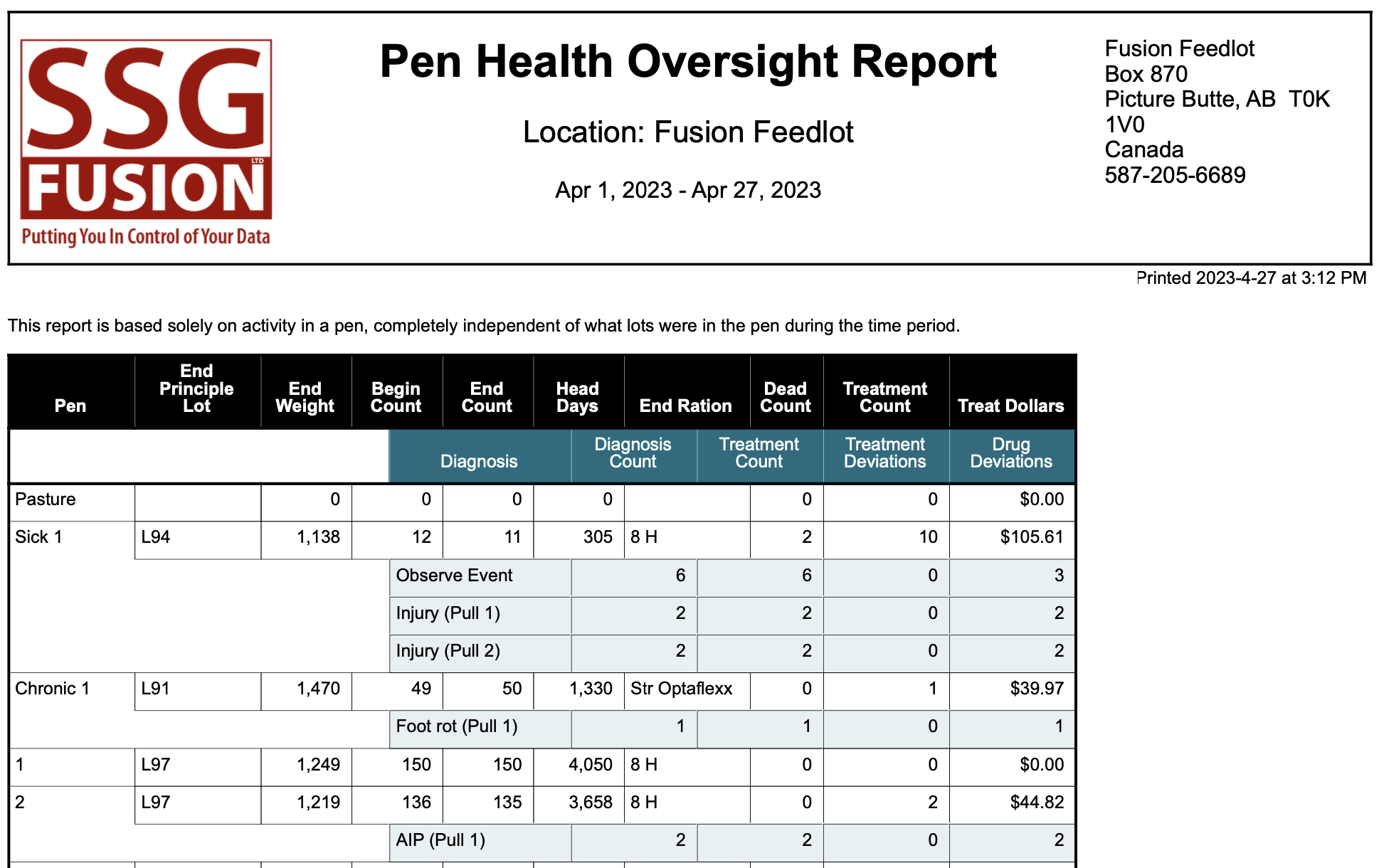
Sometimes the little things make a big difference. Have you ever found yourself endlessly scrolling the list of available fields when making an Advanced Print report, trying to find the field you need to add? That can be a frustrating experience!
To make this easier, we added a search field above the Available Fields list. Not only will you be able to find the field you're looking for much faster, but you might even find fields you didn't know existed! As a bonus, we added a similar search field in the Advanced View window for the same reason.
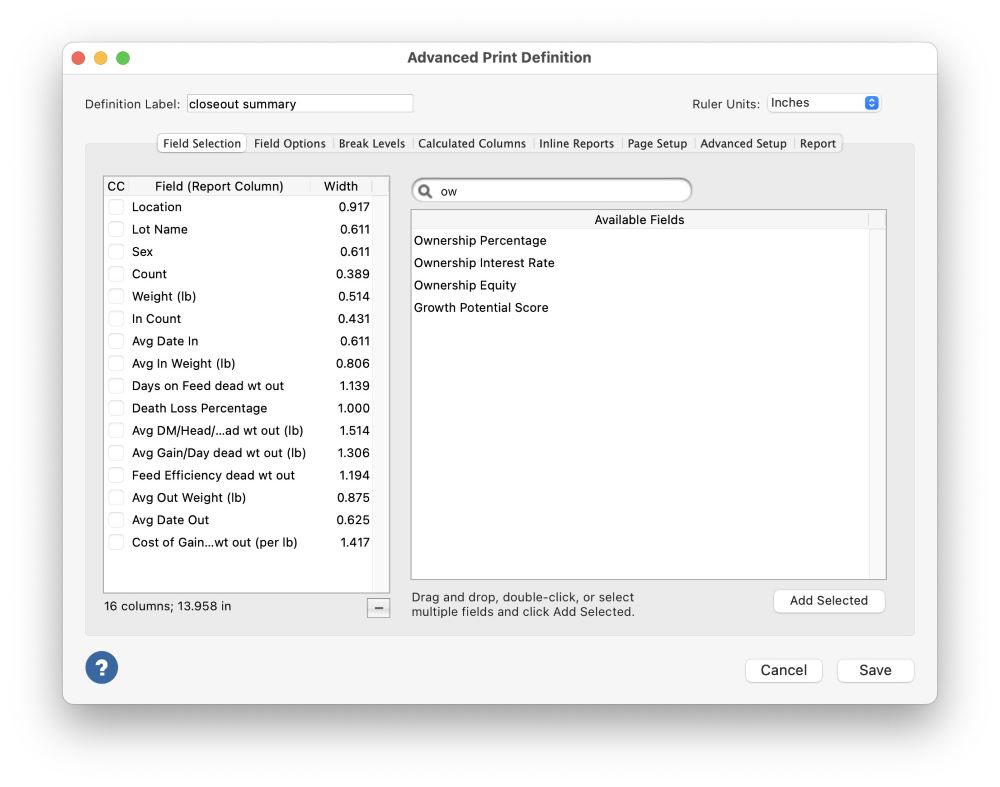
Have you ever looked under the Help menu in Fusion? Yeah, it wasn't very helpful. That changes in this update with a real help menu sporting several options for obtaining support, watching training videos, and reading the documentation. Go check it out!
By the way, these same help options are available in feed trucks and at the chuteside by tapping the help button in the main menu windows.
The Total Feed Dump report was originally meant to be used temporarily when a customer first started using Fusion as a way of checking that Fusion was recording feed properly. We've learned, however, that some customers like to use this report to compare the amount fed each pen to what was supposed to be fed by using the Target columns. Unfortunately, those columns were not designed to be used that way and have caused frustration to those thinking these columns were equivalent to what was called for the day.
To make this report more useable, we've added two new columns: Bunk Call Per Head (Dry Matter) and Bunk Call Per Pen (Dry Matter) which can better be used to compare to the actual amount fed each day. In addition, the documentation for this report does a better job of explaining each column. If you're one of the people using this report, your life should be much easier now!
The Fusion Setup Assistant window used to targeted mainly at new customers who were setting up Fusion for the first time. In this version we've expanded the usefulness of the window to everyone, including long-time customers.
Have you ever gone to change a water meter or add a new ingredient and realized you're not sure if you correctly completed all the steps? Or remembered to change all the associated attributes? Have you ever wondered what the ramification of adding a new location or incorporating another yard into an existing location were? It is hard to remember all this.
To help, we've added a link in each section of the Fusion Setup Assistant which will take you to a short video that covers the topic. They even have transcript if you want to quickly scan to make sure you remember all the steps. And there are links to relevant documentation which should be kept in mind. So if it's been a couple years since you changed a water meter or added a new ingredient, take a minute and watch the video. We all forget the exact steps needed to do something that is rarely done and these videos capture all that.
If you have a micro machine, you know the importance of having ingredient names be identical in Fusion and in the micro machine system for things to work correctly. In the past this has been a bit of trial and error, with errors not being found until a load was being mixed.
To make it easier to see problems before a load is ever made, we've enhanced the Test Communication button found in the micro machine setup inside the Physical Computer Management window. If the test is successful, Fusion will show a list of ingredients in Fusion and on the micro machine, making which ones match and which ones don't match very clear.
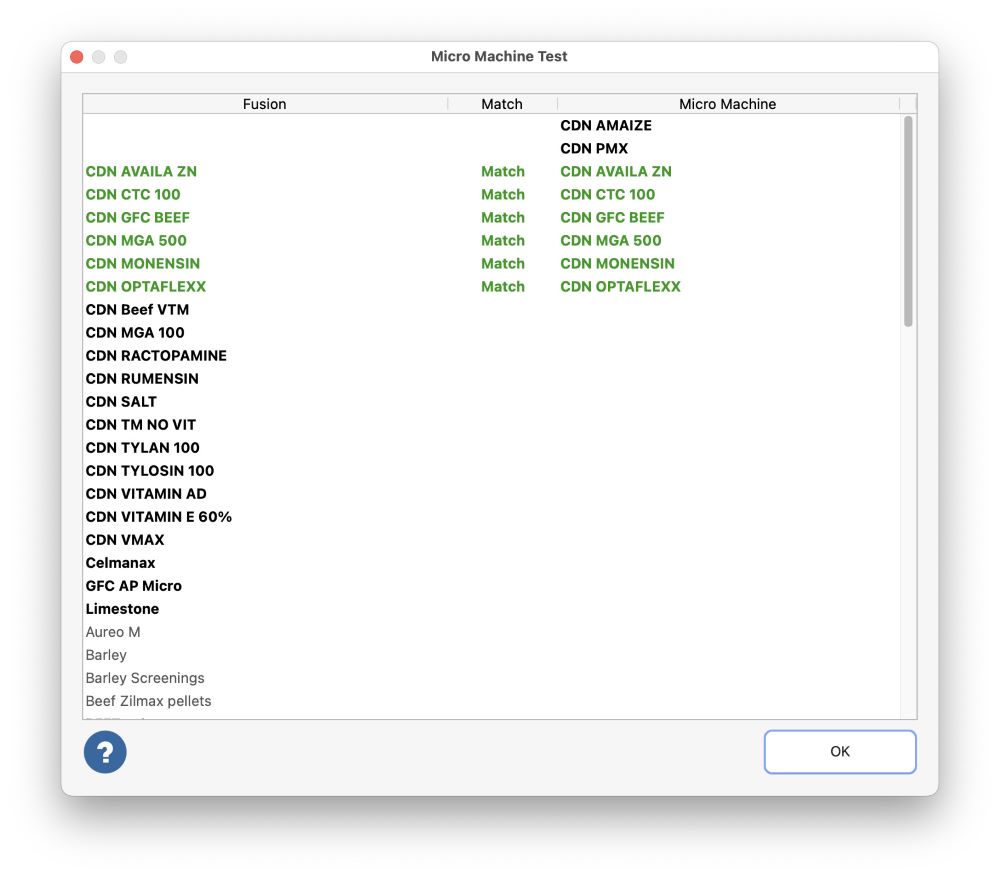
Here are a few more changes, additions, and quality of life enhancements.
We want to thank those of you who took the time to report the bugs you've found. As a result, the following bugs have been squashed. If you encounter any more bugs, please contact our support team directly. We want Fusion to be as bug-free as possible!
Please note that the minimum monitor size for office computers will increase in future versions of Fusion to accommodate easier-to-read windows. Truck and chuteside computers will not be affected.